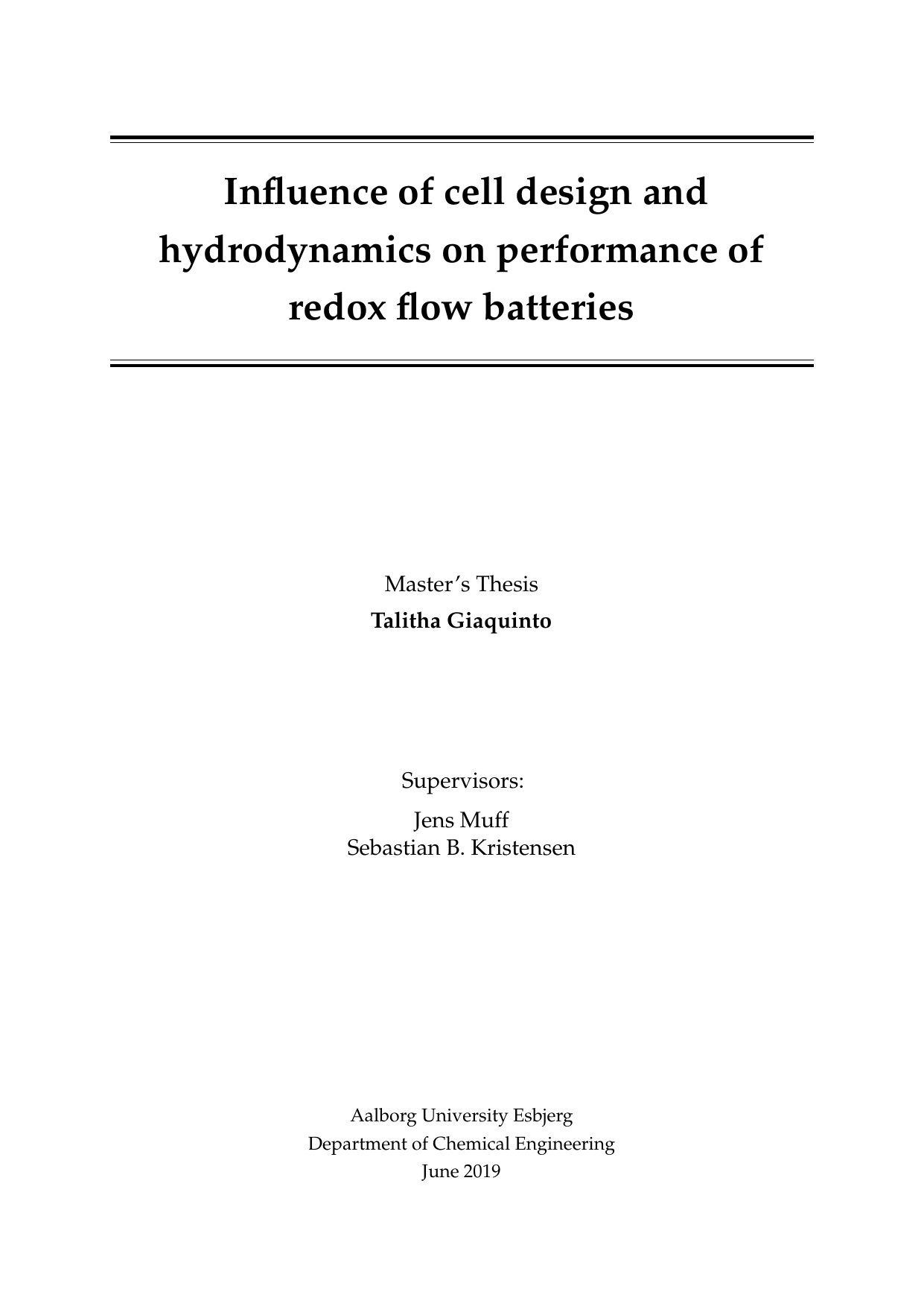
Influence of cell design and hydrodynamics on performance of redox flow batteries
Author
Term
4. term
Education
Publication year
2019
Submitted on
2019-06-07
Pages
79
Abstract
Redox flow batteries (RFBs) have emerged as prime candidates for energy storage of fluctuating renewable energy because of their ability to be scaled separately in terms of energy and power and, therefore, to potentially reduce the costs of energy storage. In particular, alkaline flow batteries based on redox-active organic molecules (quinones) and on a solution of a food additive (potassium ferricyanide), have been proven able to deliver a cell potential of 1.2\,V. The investigations focused on operating 2,6-dihydroxyanthraquinone and 2,5-dihydroxy-1,4-benzoquinone, whose reduction kinetics were evaluated through means of cyclic voltammetry, to test the performance of a newly acquired redox flow battery presenting a 'zero-gap' cell configuration. Furthermore, studies on the influence of flow and hydrodynamics on the electron transfer were carried out through the limiting-current technique, which was found not to be informative. However, despite the success of the investigations that lead to the choice of 2,6-dihydroxyanthraquinone and 2,5-dihydroxy-1,4-benzoquinone as negolytes, issues occurred during the testing phase of the flow battery.
Documents
